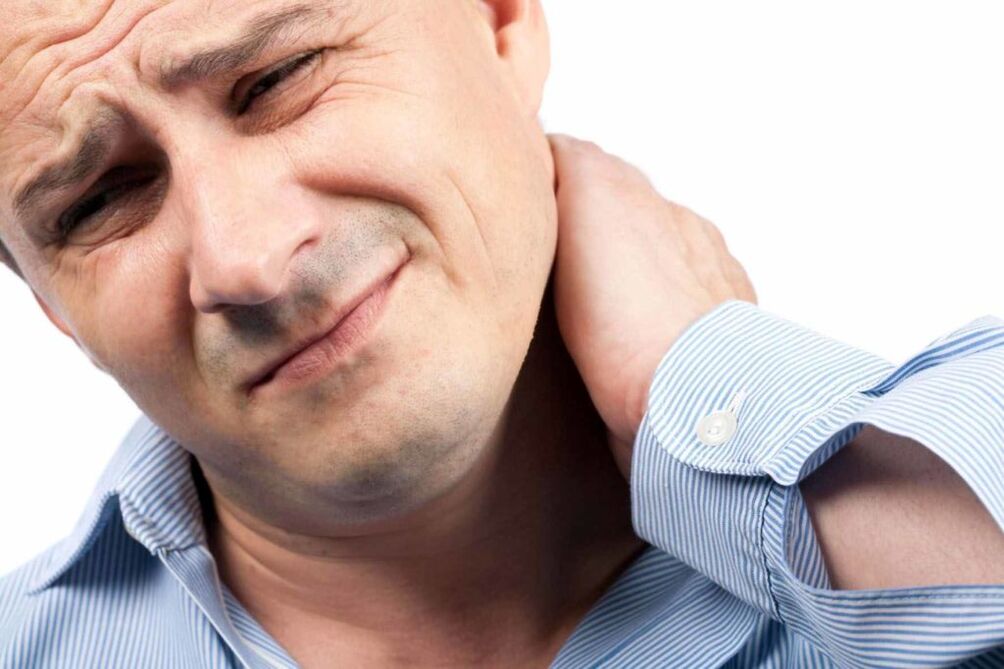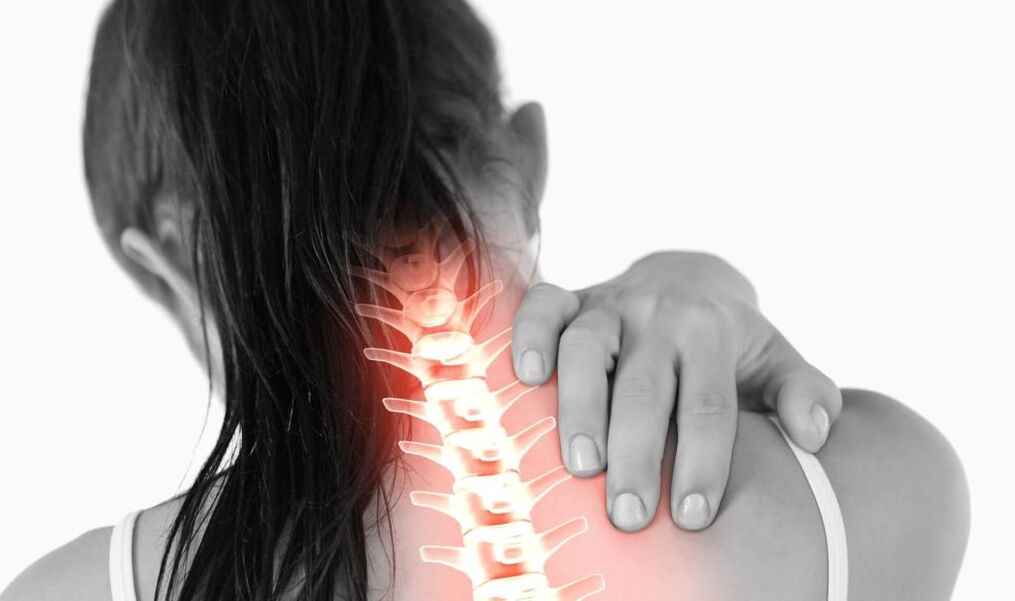Cervical osteochondrosis is a disease characterized by degenerative-dystrophic changes in the tissue of intervertebral discs, leading to reducing their height, joint damage between vertebrae, griping blood vessels and nerve roots.

Prior to that, the pathology was considered a disease of people over the age of 40, but today osteochondrose has noticeably younger, and often diagnosed with schoolchildren and students for the first time. The disease leads to multiple complications. First of all, the blood supply to the brain deteriorates. The treatment of cervical osteohondrosis is a long -trm process, and includes medicine and unintended therapy.
Causes of disease development
The reasons for the development of cervical osteochondrone are diverse. First of all, the disease occurs due to the wrong style-hypodymy, sitting offenses, excess weight. At the same time, the main cause of osteochondrose of the cervical region is violation of blood circulation in this zone. As a result, the diet of fabric of intervertebral discs worsens, which implies a change of their structure. There are several factors that contribute to the development of this disease:
- hypodynamia;
- Weak corset in muscles;
- Excess weight;
- Door injuries;
- stress;
- hypothermia;
- Systemic connective tissue diseases (red lupus, rheumatoid arthritis).

Hypodynamia is one of the most important factors in the development of a spinal column disease. Due to the lack of physical activity, people who spend a lot of time in a sitting position are facing osteochondrose. Much depends on the keeping and muscles of the back. The irregular position of the door during a long work on the table on the table leads to violation of the food intervertebral discs, which is poured over time in the degeneration of cartilage and development of osteochondrose. For this reason, the disease is often diagnosed with students and students, because their daily activity is associated with many hours of seating at a table or at a table. Also, osteochondrosis is often diagnosed with office workers and all people who spend a lot of time on the computer.
As a rule, the development of osteochondrosis appears under the influence of several provocative factors at once. Many doctors consider osteochondrose that is not an independent disease, but a natural consequence of the wrong way of life. Permanent fatigue, stress, wrong body position during sleep or work on your computer, excess weight and bad habits - all this harms the health of the spinal column. As you know, strong back is the key to good health and longevity. Despite the fact that osteochondrosis does not threaten life, this violation can significantly exacerbate general well-being and cause the development of other diseases, so it is important to reveal the disease in a timely detection of complex treatment.
Symptoms of the disease and the degree of osteochondrose

Son of pain occurs on the background of the disease progress. Rising symptoms of cervical osteochondrose in women and men is a debt process. From the moment of changing the tissues of intervertebral discs, before the first signs of cervical osteochondron, they may last more than one year in the appearance of interverter discs. There is no difference in cervical osteochondrose symptoms in men, women and children. The only difference: at a young age, symptoms do not express themselves as clear as in the elderly. These are lubricated symptoms that are due to difficulties in the treatment of cervical osteochondrosis. The person does not see a doctor to the pronounced symptom of a disease that brings discomfort. This is happening at least 5 years after the beginning of the degeneration of the cartilage tissue of intervertebral discs. In the early years of development, osteochondrosis of cervix is practically not accompanied by clinical events. Perhaps just a slight feeling of stiffness of the upper back after sleep or short muscle cramps in moments of psycho -emotional surge. In order to understand the signs of cervical osteochondrosis in men and women, the degree of this disease should be considered characterized by the severity of the pathological process in interfaced discs.
First (preterm) Development: Symptoms and characteristics
With cervical osteochondrose, symptoms and treatment depend on the phase of the pathological process. The first degree is called the preclinical, because there is no characteristic clinical symptom. It is possible to recognize osteochondrose at this stage only to the hardware diagnostic - the disk changes are visible to X -Ray (not always) and are well visualized on MRI and CT. In the first phase of the disease, there is a violation of the trophy (nutrition) of intervertebral disks. As the disease advances, the elastic tissue of cartilage is compacted. Discs become more difficult, as a result of which vertebrae loses mobility. Therefore, degenerative-dystrophic processes begin, which leads to a violation of the function of the uterine spine. As a rule, symptoms become noticeable in the second phase of disease development, but expressed so poorly to rarely bother the person. The first degree of disease goes next in a few years.
Symptoms of osteochondrose of another degree

The second level of cervical osteohondrosis is characterized by an increase in muscle tone in the area of damage. How can you cure cervical osteochondrose - it depends on the weight of the disease. If the pre-indelid phase is often not in its own, the second level of illness acquires some symptoms that should alert the patient and make it see the doctor. Whether it is possible to completely cure cervical osteochondrose - depends on the severity of the pathological process. Previously, the initial therapy is, it is a more favorable forecast. In the second phase of disease disks between vertebraes are compacted. The neck loses mobility, but in ordinary life it is practically not mixed in the patient. The characteristic symptom is an increase in the muscle tone of the affected area. With extended physical effort, sharp head movements, after long sleep, muscle hypertension can be observed. Sudden movements lead to acute pain. This is due to the fact that spasmodic muscles compress the nerve, causing strong pain. The pain can be given on shoulders, neck, less often - in the lower limbs. Such variability of pain syndrome was created due to a large number of nerve roots located in the cervical region.
The first signs of cervical osteochondorosis are the following symptoms:
- fatigue;
- headache;
- Dizziness after sleep;
- Pain in the cervical region with sudden movements;
- Local skin stiffness of the cervical region.
As a rule, in the second phase of the disease, the symptoms appear only occasionally. This is usually due to severe overcoming or intense physical effort. Most patients do not pay due attention to easy weakness, expecting that I am uncomfortable. Generally, so happens, symptoms rarely bother a person more than a few hours and pass without taking special medications.
Features of osteochondrosis of the third degree

The symptoms of the osteochondrose of the cervical spine of the third degree is pronounced. If there are changes in the first stage of the disease, the second degree is characterized by discs of disc discs, and then the third level of osteochondrose are cracks and microwave ovens of fibrous rings. Perhaps the formation of Hernini - a loss of pulposis nucleus in interviolent space. This is accompanied by a violation of cerebral circulation, because flattened discs strongly compress the spinal artery. A typical symptom is a strong headache, a common dizziness, flickering flies in front of the eyes. With the osteochondrose of the third degree, the feeling of weight in the neck is constantly present. Muscles are almost always spasmodic, a person feels strong and pain. Long-term stay in one position, the tension of neck muscles or sleeping on an uncomfortable pillow leads to local stiffness of the skin or a strong attack attack. You can feel changes with palpation - the door muscles become firm to touch, the pressure causes strong pain. The sign of cervical osteochondrosis in men is strong load pain (women less often burden this king spine in everyday life).
Fourth degree features
The suffocated nerve disturbs blood circulation and causes strong neck pain. The fourth phase of the disease is the hardest. At the same time, irreversible changes occur in the structure of discs. The pathological process is spread from the fibrous ring to vertebrae. The signs of osteochondrose of the cervical spine in this case are described in several syndrome - these are Rooser, Reflex, Spinal Syndrome. Strong pain is observed along the suffocated nerve, disturbances in cerebral circulation. At this stage, the symptoms of cervical osteochondorosis are diverse. Frequent billions (muscles), neuralgia, migraines arise. The pain extends to the chest, the patient may encounter discomfort in the heart, which is associated with intercostal neuralgia against left-osteochondrose background.
How to cure osteochondrose?
Such spine disease requires a doctor's intervention

How best to deal with cervical osteochondrose - just a doctor can answer this question. There is no universal treatment of cervical osteochondrose, it all depends on the characteristics of the disease flows in a particular patient. Patients often interested in which doctor treats cervically osteochondrose. Usually, the initial diagnosis performs a therapist or neurologist, to whom patients complained of pain in the cervical region. To make a diagnosis, you need to make a neck X -Ray in three projections and MRI, check the presence of NERI symptoms. The method of treatment of cervical osteochondorosis will depend on the test results, therapy is a selected neurologist. As accurately cervical osteochondronda is treated - depends on the stage of developing degenerative dystrophic changes in discs. In the initial phase of the disease, especially physical education will help both resolve the symptoms of osteochondrose in the cervical region and prevent further expansion of the pathological process.
The methods of treatment for osteochondrose are different. Complex therapy includes:
- medication treatment;
- Exercise therapy;
- Physiotherapy procedures;
- Hand therapy.
The symptoms and treatment of osteochondrosis depend on the severity of pathological changes in the burnt spine. Treatment of osteochondrose doors should be prescribed by the doctor, self-initiation will not bring the result and can be dangerous.
Medications
The first thing that can be done with cervical osteochondrose is to remove pain and muscle spasm; This is the first help to the patient. For this purpose, nonsteroidal anti -infalmator drugs, analgesics and muscular relaxants are used. As a rule, this allows you to relieve discomfort in hours. The relief of muscular cramping itself is an effective way of treatment, because it returns the nervous conductivity and blood circulation in the cervical region. How to treat osteochondrose of cervix in the future depends on the degree of development of pathological changes. Doctors often prescribe:

- B Vitamins to restore nervous implementation;
- Hondroprotectors for improving the nutritional nutritional fabric of intervertebral disks;
- nootropici to improve cerebral circulation;
- products that improve the rheological properties of blood;
- Sedivati to relieve stress.
Not all of the listed groups of drugs are advisable to use at different stages of the disease. The exact methods of cervical osteochondrosis will be selected a doctor.
Practice therapy
Media physically upbringing well deals with osteochondrose in the initial phase of development. Medical physical education is the most effective treatment of cervical osteochondrose in the initial phase. Osteochondrosis in children and adults occur due to weak muscles back, so this treatment aim not only to remove symptoms, but also to eliminate the cause of the disease. Class of therapeutic exercises are held in the Special Office of the Clinic. Exercises are selected individually for each person and are performed under the supervision of the doctor. Whether cervical osteochondrose is treated - it depends on how fast the person contacted the doctor. The first degree of illness can be cured only with gymnastics. Symptoms of osteochondrose Cervical vertebrates take place after several such classes, because muscle spasm is declining.
Physiotherapy

Chronic osteochondrose, of which symptoms can virtually not bothering a person, are treated with physiotherapy. This method is focused on renewing normal diet fabrics on intervertebral discs. It is usually used by electrophoresis with nicotine acid to spread blood vessels and improve blood circulation. This method of treatment relieves the symptoms of cervical osteochondrosis with radio cylinder syndrome and migraines, as it reduces the nerve compression and improves cerebral circulation. The main symptoms of cervical osteochondrose can be eliminated by magnetotherapy or exposure to heat. Only 10-15 procedures normalize the trophic in the cervical region and eliminate the symptoms of the disease.
Forecast
Whether he is healed on cervically osteochondrose - it depends on the weight of the disease. In the initial phase, the pathological process is completely rotated. Intervertebral discs are returned by a right approach, but slowly. The treatment is focused on preventing the disease promotion and the restoration of cartilage elasticity. With advanced forms of the disease, it is almost impossible to return the former door mobility. A comprehensive treatment of osteochondrose cervical spine in this case allows you to get rid of the symptoms and prevent the development of complications. In severe cases, the patient will have to undergo preventive treatment twice a year.



















